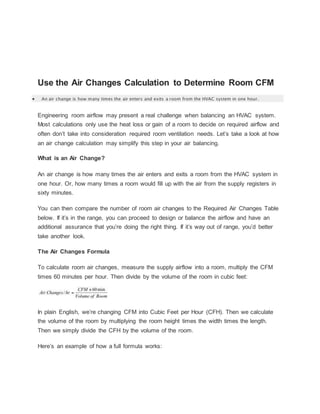This document discusses how to calculate the airflow requirements for a room using an air changes per hour calculation. It provides the formula for calculating air changes per hour based on a room's supply airflow, volume, and time. It also includes a table of recommended air changes per hour for different room types. The document provides an example calculation and emphasizes the importance of ensuring a room has sufficient ventilation. It also discusses how to calculate a room's required CFM if the supply airflow is unknown based on the room's volume and required air changes.






















